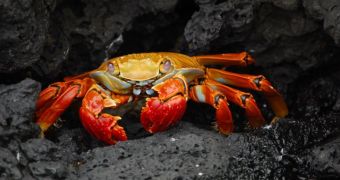For some reason, there are quite a lot of people in this world who are in the habit of flushing anti-depressants down toilets or sinks. The problem is that these drugs can escape waste treatment plants and can, therefore, build up in natural ecosystems that our planet's seas and oceans accommodate for.
According to recent studies, some of the most common drugs that work their way into the environment include Prozac and Sertraline. Even in low concentrations, these compounds have been documented to affect both the behavior and the appearance of marine creatures.
More precisely, evidence at hand indicates that crustaceans exposed to anti-depressants change their color, tend to grow a wee larger and spawn more regularly, Daily Mail informs.
According to Dr. Alex Ford with the University of Portsmouth, these drugs affect marine wildlife due to the fact that they are designed to toy with the hormone levels in a given living organism.
Thus, the drugs are merely doing their job to reshape hormonal balance. The only problem is that they have the wrong patients, the University of Portsmouth researcher explains.
“In many invertebrates, serotonin controls the release of certain pigments, causing the creature to change colour and recent studies have shown that anti-depressants can alter colour changes in cuttlefish. The drugs can also affect growth, feeding and metabolism,” Dr. Alex Ford said.
“What we now know is they can be affected by exceedingly small amounts, as little as one nanogram per liter - the equivalent of dropping a few grains of the compound into an Olympic-sized swimming pool,” he went on to detail.
Other than being flushed down sinks and toilets, such drugs can end up in aquatic ecosystems via excretions. Apart from crustaceans, they have been documented to affect water snails and mussels.

 14 DAY TRIAL //
14 DAY TRIAL //